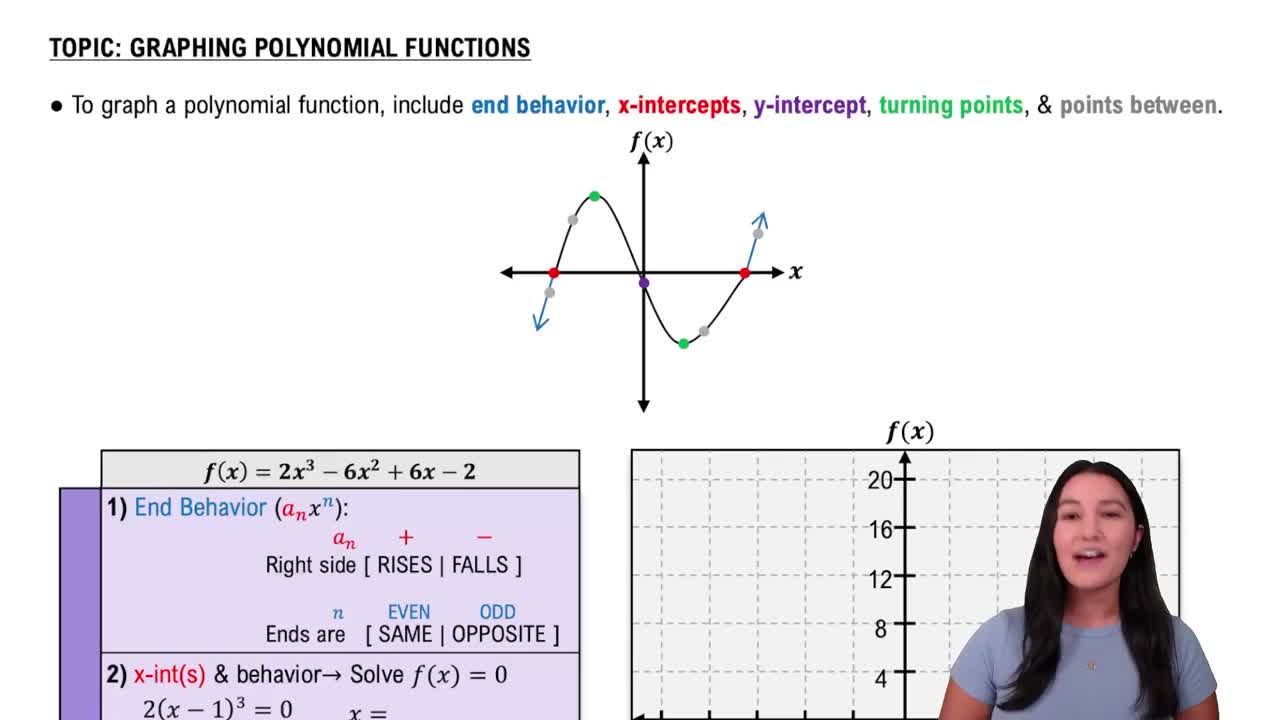Here are the essential concepts you must grasp in order to answer the question correctly.
Leading Coefficient Test
The Leading Coefficient Test is a method used to determine the end behavior of polynomial functions based on the sign and degree of the leading term. For a polynomial of the form f(x) = ax^n, where 'a' is the leading coefficient and 'n' is the degree, if 'n' is even, the ends of the graph will either both rise or both fall, depending on the sign of 'a'. If 'n' is odd, one end will rise while the other falls. This test helps predict how the graph behaves as x approaches positive or negative infinity.
Recommended video:
End Behavior of Polynomial Functions
Symmetry in Graphs
Symmetry in graphs refers to the property of a function where its graph remains unchanged under certain transformations. A function has y-axis symmetry if f(-x) = f(x), indicating it is even, and it has origin symmetry if f(-x) = -f(x), indicating it is odd. Identifying symmetry helps in sketching the graph and understanding its behavior, as symmetric functions can simplify the analysis of their properties.
Recommended video:
Graphs and Coordinates - Example
Graphing Polynomial Functions
Graphing polynomial functions involves plotting points based on the function's values and understanding its shape based on its degree and leading coefficient. Key features to consider include intercepts, turning points, and end behavior. For the function f(x) = 4x - x^3, recognizing that it is a cubic polynomial allows us to anticipate its general shape, including potential local maxima and minima, which are crucial for accurately sketching the graph.
Recommended video:
Graphing Polynomial Functions
 Verified step by step guidance
Verified step by step guidance Verified video answer for a similar problem:
Verified video answer for a similar problem:



 6:04m
6:04m